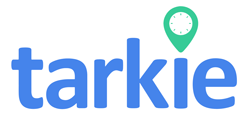How can companies keep employee productivity high while setting up good leave management policies? In today’s fast-paced world, small and medium businesses in the Philippines face a big challenge. They must balance employee leave with their work needs.
This article explores the best ways to manage leave. It shows how to follow local laws and boost team efficiency. By knowing the different types of leave and the effects of missing work, companies can make strong leave policies. These policies help keep work running smoothly and make sure employees are happy and healthy.
Investing in good leave management systems can really pay off. It can cut costs, improve team spirit, and make employees more productive.
Key Takeaways
- Companies with effective leave management systems can cut administrative costs by up to 30%.
- Automated leave management software typically results in a 20% boost in productivity.
- Having clear leave policies can increase employee retention rates by 25%.
- Engaged employees are 60% more likely to remain loyal when transparent leave management is provided.
- Implementing a leave management system can reduce salary payment errors by 40%.
- Regular communication regarding leave policies can decrease inquiries by 30%.
Understanding Leave Management
Leave management is about handling employee time off, like vacation and sick leave. It makes sure the business follows labor laws and runs smoothly. For small and medium businesses in the Philippines, it’s key to meet legal needs and create a good work environment.
Good leave management makes handling time off easier. Companies using software find it helps a lot. It makes things clear and avoids confusion. This makes employees happy and valued when they get time off.
To keep things running well, plan for when employees will be out. Clear policies help keep work flowing without stops. A good leave system can also keep employees happy and loyal for a long time.
Keeping accurate records is crucial for compliance. Companies that properly track employee leave can avoid hefty fines. With penalties reaching up to ₱5.6 million, it’s essential to follow regulations and respect employees’ rights.

Importance of Effective Leave Management
Effective leave management is key to a productive work environment. Many organizations struggle with managing leave, as 67% of HR managers reported. A clear leave policy helps reduce disruptions and boosts productivity.
Complex approval processes can cause delays and stress for employees. Streamlined HR policies improve well-being and job satisfaction. For example, Microsoft offers a platform for easy leave requests and tracking.
Ignoring leave laws can lead to legal troubles and fines. A detailed leave policy ensures compliance and transparency. This helps employees plan better and reduces work overload for those who stay.
Leave management systems help keep accurate records and simplify payroll. They also free up HR teams to focus on growth strategies. Companies with good leave management keep employees longer, building a strong culture.

Types of Employee Leave to Consider
It’s key to know about different employee leave types for a good work environment. Leaves like vacation, sick leave, parental leave, and emergency leave have their own roles. Vacation lets workers rest and come back more productive. Sick leave helps them heal without worrying about money, keeping everyone healthy.
Parental leave helps new parents bond with their kids. Emergency leave gives flexibility for sudden issues, keeping jobs safe. Good leave policies show a company cares about work-life balance. They build trust and support among employees.
A good leave policy boosts morale and lowers turnover. Many workers value paid time off for job happiness. Companies might offer different leave amounts, based on laws or to attract talent.
Using a system to track leave helps follow rules and manage staff. Clear policies build trust and engagement. This leads to better productivity and a happier workplace.
Flexible leave options make employees happier and more productive. This approach leads to a better work-life balance. It’s good for both employees and the company’s success.
For more tips on boosting productivity, see this resource.
Impact of Employee Leave on Productivity
The employee leave impact on workplace productivity is a big deal for any company. Taking time off is good for employees, but it can affect how well things get done. Studies show that stress and anxiety are top reasons for long absences from work.
In places where paid time off is common, companies have to find a balance. They need to keep employees happy while also keeping work flowing smoothly.
When employees take long absences, it can be challenging for businesses. It means losing skilled workers and putting more pressure on others. For example, if an employee earning ₱2.8 million per year is out for 10 weeks, it costs over ₱540,000. This doesn’t even include the extra workload on their colleagues.
Using systems to track leave can help manage these issues. It lets managers plan for when staff is short. This way, they can keep things running smoothly.
Good leave policies make employees happy and engaged. They help keep the mood high, even when people are out. Companies that focus on leave management often see big improvements in productivity.
Using technology to manage leave can make things clearer and more organized. It’s also important to talk about leave policies openly. This helps avoid confusion that can mess up work.
Doing surveys can help understand how leave affects work. It shows how absences relate to overall performance. Tracking important performance signs during busy times can show any problems. Companies that offer flexible leave policies can make work better for everyone. This leads to higher productivity.

Best Practices for Managing Employee Leave
Managing employee leave well is key to a productive workplace. Clear time off policies help employees know their leave rights and duties. A clear policy builds trust and respect in the workplace.
Establish Clear Time Off Policies
Companies need to make detailed time off policies. These should cover how to book leave, accrual rates, and carryover rules. Clear policies cut down on confusion and boost employee happiness.
Research shows 67% of employees feel good about their job with clear leave policies. This improves workplace morale. Setting up these policies also helps avoid legal issues by following local laws.
Utilize Leave Management Software
Using leave management software in HR operations has big benefits. It makes requesting and approving leave easier, saving HR time by up to 50%. This automation makes the leave process smoother for everyone.
Good HR solutions like Timetastic track leave trends and encourage employees to use their leave. This is good for their health and work performance.

Balancing Employee Leave and Organizational Needs
Small and medium enterprises (SMEs) must balance their needs with those of their employees. Adopting flexible leave policies is key to achieving this balance. It’s clear that 30% of employees worry about taking time off because of work.
Good communication about leave policies helps employees understand their options. A system for managing leave is vital for following rules and keeping things running smoothly. It’s known to improve employee happiness and keep them from leaving.
When employees take breaks, they’re 50% more likely to be happy at work. Managing absences well can prevent them from hurting productivity. Training staff to cover for each other during leaves keeps productivity high.
Creating a culture that values flexible work can make employees 35% happier about their work-life balance. Having clear leave policies can cut down on unauthorized absences by up to 30%. This keeps everyone productive and happy.
Strategies for Reducing Employee Absenteeism
To cut down on employee absences, a mix of strategies is needed. A supportive work environment boosts employee engagement and tackles absenteeism’s causes. Talking openly about personal issues helps spot problems early, building trust.
Monitoring the workforce regularly lets companies track attendance patterns. This helps adjust policies to fit the needs of the team. Using attendance management systems is key for accurate tracking and fair payroll.
Clear attendance rules are crucial. They tell employees what happens if they miss work too often. Rewarding those who show up regularly can improve the work atmosphere and motivate staff.
Stress-related absences cost businesses up to ₱16.8 trillion per year. Health issues cause about 5.4% of full-time employees to miss work. Companies must find ways to reduce these absences to stay productive.
| Impact of Absenteeism | Financial Cost |
|---|---|
| Annual absenteeism cost in the U.S. | ₱12.6 trillion |
| Absenteeism-related costs for managers and executives | ₱876 billion |
| Annual absenteeism in professional fields | ₱1.35 trillion |
| Productivity decline due to unexpected absenteeism | Nearly 40% |
| Overtime hours utilized to cover absences | Roughly 50% |
Initiatives that focus on mental health and wellness can help reduce absences. By using these strategies and keeping a close eye on the workforce, workplaces can become more productive and healthier.
Leave Management, Employee Productivity, Best Practices
Effective leave management is key to boosting employee productivity and morale. Companies that follow HR best practices see better results. They clearly communicate leave policies and keep an eye on leave trends.
This approach creates a culture that cares about employee welfare. It also helps in managing the workforce better.
Flexible leave policies make employees happier and meet legal needs. For example, Patagonia goes beyond the law by offering generous parental leave. Keeping policies up-to-date and sharing changes quickly keeps employees engaged.
Good leave management systems can really boost productivity. Using leave management software automates tasks, cuts down on mistakes, and makes things smoother. Companies with clear policies see a 30% drop in leave disputes.
Automation also saves 40% of time spent on leave requests. This lets HR focus on more important tasks.
| Leave Management Strategy | Impact on Employee Productivity |
|---|---|
| Clear Communication of Policies | 25% Improvement in Satisfaction |
| Automated Leave Management Software | 50% Reduction in Administrative Load |
| Flexible Leave Options | 18% Increase in Retention Rates |
| Regular Monitoring of Leave Trends | 22% Decrease in Excessive Leave Requests |
Creating a culture of trust and flexibility around leave helps avoid abuse. It makes the workplace better for teamwork. A good leave management plan supports employee well-being and boosts productivity.
Conclusion
Effective leave management is crucial. It boosts employee happiness and helps the company work better. It also makes sure the business follows the law.
Clear policies and modern leave systems help a lot. They make sure employees feel important. This is key for a happy workplace.
Good leave management cuts down on missed work and keeps employees from getting too tired. It makes the workplace better for everyone. Companies that do this well keep their best workers longer.
This leads to a better work environment. It helps the company grow and succeed over time.
As companies face tough competition, managing time off well is more important than ever. It helps plan the workforce better and makes everyone more productive. By focusing on what employees need, companies can find a good balance.
This balance is key for a successful and happy workplace. It helps everyone do their best work.
